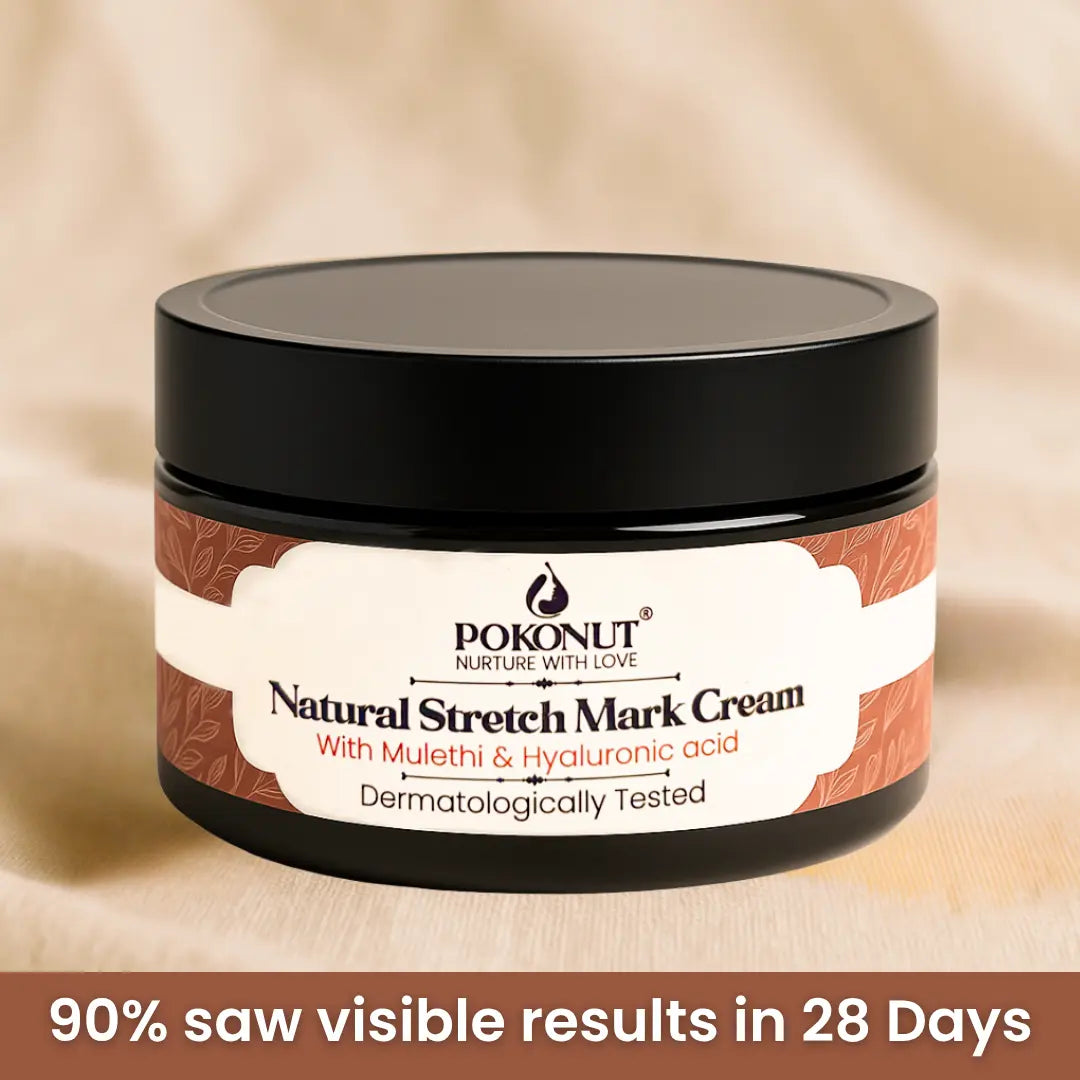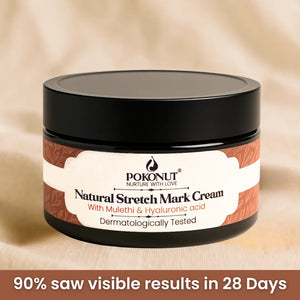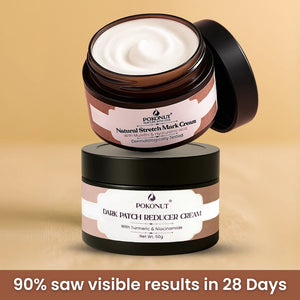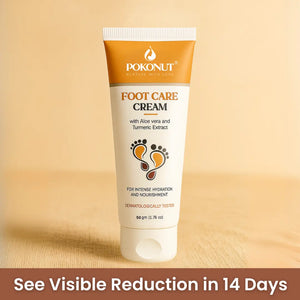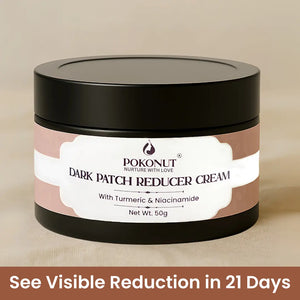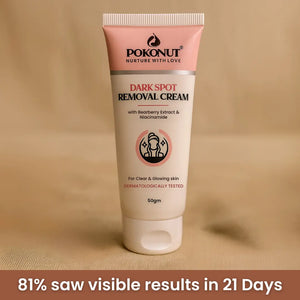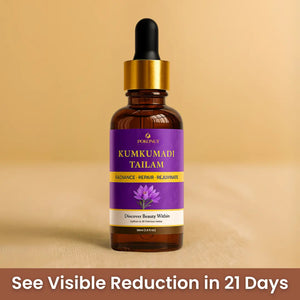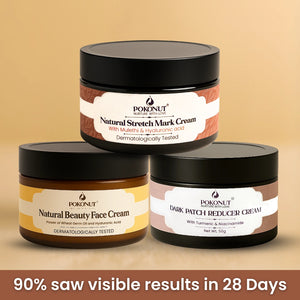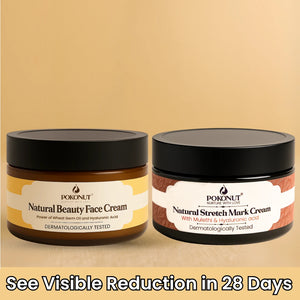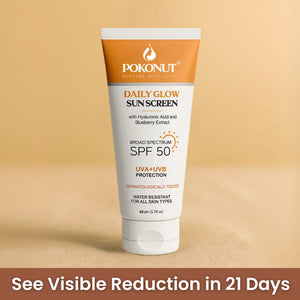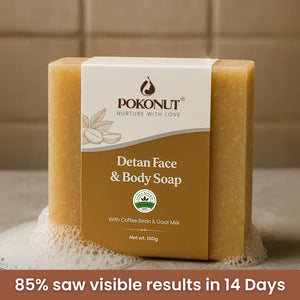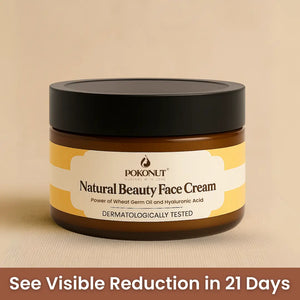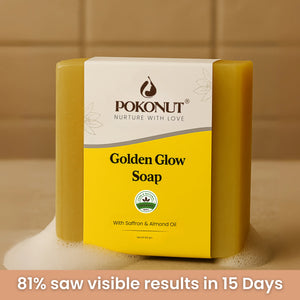Why Do Women Get More Dark Spots? Here’s How to Treat Them Safely

Medically Reviewed By:
Dr. Neeraj Bansal, BAMS
Written by Our Editorial Team
Dark spots, pigmentation, and uneven skin tone are concerns that affect both men and women—but statistically and biologically, women tend to experience them more often. From hormonal fluctuations to lifestyle-related stressors, female skin faces unique challenges that make dark spots a recurring issue.
This guide explores why women are more prone to dark spots, and how a well-formulated dark spot removal cream for female skin can treat them safely—without harsh bleaches or damaging ingredients.
Why Women Get More Dark Spots Than Men
Women’s skin is sensitive to a wide range of internal and external triggers—making it more vulnerable to discoloration over time.
Common causes of dark spots in women:
Women’s skin is more sensitive to biological and environmental triggers—making it more vulnerable to pigmentation over time.
-
Hormonal changes: Fluctuations during menstruation, pregnancy, or due to birth control can stimulate excess melanin production, leading to melasma or dark patches.
-
Post-acne hyperpigmentation: Inflammation from breakouts can leave behind stubborn marks that take weeks—or months—to fade, especially on medium to deep skin tones.
-
Melasma: A hormone-related condition that causes symmetrical brown patches, usually on the cheeks, forehead, or upper lip. Often triggered by sun + hormones.
-
Sun exposure without SPF: UV rays accelerate melanin production, deepening existing spots and creating new ones—especially when sunscreen is skipped.
-
Pollution and oxidative stress: Environmental toxins can damage skin cells, trigger inflammation, and lead to dullness and uneven tone over time.
-
Skin reactions to makeup or products: Harsh ingredients or fragrances can cause irritation or allergic responses, which often heal with lingering pigmentation.
Each of these can trigger melanocytes—the cells that produce pigment—to overproduce melanin, leaving behind patches or spots that don’t fade easily on their own.
The Safe Way to Treat Dark Spots
Women’s skin, especially when influenced by hormonal shifts, can be more reactive. That’s why treating dark spots safely means using products that are gentle, effective, and free from bleaching agents or harsh acids.
Here’s what matters when selecting a dark spot removal cream for female use:
|
Safe Treatment Must-Haves |
Why It Matters |
|
Non-bleaching actives |
Avoids skin thinning or rebound pigmentation |
|
Anti-inflammatory ingredients |
Calms irritation and redness linked to hormonal sensitivity |
|
Natural brighteners |
Targets melanin buildup without harming surrounding skin |
|
Daily usability |
Should be lightweight, non-greasy, and suitable for everyday application |
|
Tested on Indian skin tones |
Ensures suitability for melanin-rich, hyperpigmentation-prone skin |
What to Look for in a Dark Spot Removal Cream for Female Skin
The right cream doesn’t just fade spots—it protects the skin barrier, improves texture, and prevents future pigmentation.
Key Ingredients to Look For:
-
Niacinamide – Reduces melanin transfer and soothes inflammation
-
Licorice Root Extract – Lightens dark patches and prevents new ones
-
Vitamin C – Antioxidant protection against free radicals and UV damage
-
Bakuchiol – Plant-based retinol alternative that smooths texture without irritation
-
Kojic Acid – Gently brightens skin and reduces sun damage
These ingredients work in synergy to give results without compromising skin health.
How to Use a Dark Spot Removal Cream for Female Skin Types
No matter how good the formulation, results come from consistent, correct usage.
Daily Routine for Best Results:
-
Cleanse your face gently, avoiding overly harsh exfoliators
-
Apply a pea-sized amount of cream to dark spots or entire face
-
Use at night when skin is in repair mode
-
Follow with a light, hydrating moisturizer
-
Always wear SPF the next morning—UV exposure can undo progress
Visible fading typically begins in 4–6 weeks of consistent use, but hormonal pigmentation (like melasma) may take longer.
Product Spotlight: Pokonut’s Dark Spot Removal Cream
Pokonut’s dark spot removal cream for female is designed specifically for women dealing with recurring pigmentation caused by acne, hormones, or sun exposure.
Why it works:
-
No hydroquinone, parabens, or synthetic fragrance
-
Non-comedogenic and suitable for daily use
-
Lightweight and fast-absorbing for all skin types
-
Powered by niacinamide, licorice, kojic acid, and bakuchiol
Whether it’s dark patches post-acne or hormonal pigmentation that won’t fade, this cream offers a gentle but powerful solution.
Real Feedback, Real Results
Thousands of women have used Pokonut’s cream to treat persistent pigmentation—and many have shared their experiences. If you’re wondering whether it lives up to the promise, take a look at the real stories in this blog:
Pokonut Dark Spot Removal Cream Reviews
Reading real feedback from women with similar concerns can help guide your skincare decision more confidently.
What NOT to Do When Treating Dark Spots
Treating pigmentation requires patience. Some common mistakes actually make spots worse:
Avoid These:
-
Using bleaching creams with hydroquinone or mercury
-
Scrubbing or exfoliating aggressively
-
Skipping sunscreen
-
Switching products too frequently
-
Using multiple actives without guidance
Less is more. Stick to one solid, well-formulated cream and let it work over time.
Final Thoughts
Dark spots can be frustrating—but they’re not untreatable. Understanding the female-specific causes of pigmentation helps target the root problem, not just the symptoms. And using a safe, effective dark spot removal cream for female skin ensures the journey to clear skin is healthy, not harmful.
Pokonut’s Dark Spot Removal Cream is made for this purpose—powered by plants, tested for Indian skin, and trusted by women across the country.
FAQs:
1. What makes female skin more prone to dark spots?
Hormonal fluctuations, acne scarring, melasma, and skincare reactions are more common in women, making dark spots more persistent.
2. Can I use this cream while breastfeeding or pregnant?
The cream is free from harsh bleaching agents, but always consult a doctor before starting any new skincare during pregnancy or lactation.
3. How long does it take to see results?
Most women notice improvements in 4–6 weeks. Hormonal pigmentation may take 2–3 months of consistent use.
4. Is this cream suitable for oily or acne-prone skin?
Yes. Pokonut’s cream is non-comedogenic, meaning it won’t clog pores or cause breakouts.
5. Can it be used alongside vitamin C serum?
Yes. For best results, apply the vitamin C in the morning and use the dark spot removal cream at night.
About Doctor :

